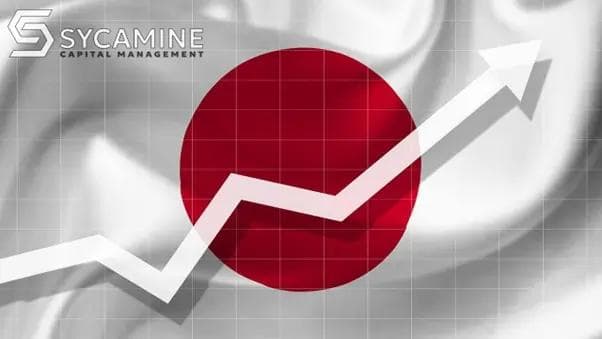By Mike Foster, General Manager, Institutional Management Solutions, Investment Services, Fiserv
 After a long period of instability and continued global market volatility investors are seeking more value from their investments and closely examining costs related to investment products and advisory services. New “customer lifecycle” pricing models are now popular to increase client loyalty. Impending regulations, such as the Retail Distribution Review, also demand greater transparency on charges on client statements. These factors challenge asset managers to offer flexible pricing arrangements, efficiently accommodate varying fee structures and provide transparency in billing to their clients.
After a long period of instability and continued global market volatility investors are seeking more value from their investments and closely examining costs related to investment products and advisory services. New “customer lifecycle” pricing models are now popular to increase client loyalty. Impending regulations, such as the Retail Distribution Review, also demand greater transparency on charges on client statements. These factors challenge asset managers to offer flexible pricing arrangements, efficiently accommodate varying fee structures and provide transparency in billing to their clients.
Adding to the asset manager’s challenge is a strong focus on growth, to compensate for prior years of down markets. One way to help achieve growth is to more tightly manage revenue. While this may seem logical, most asset managers are often supported by disparate technology systems and manual billing and revenue management processes, which don’t support strict revenue management and, therefore, growth. It is clear that in today’s environment, asset managers must have an integrated, automated approach for customer billing and revenue management, to ensure efficiency and transparency remain fundamental to the business, to facilitate growth.
Position Your Firm for Growth
To drive efficient operations, asset management firms must move away from manual processes and reduce the number of disparate systems that perform the same tasks. Centralising and automating revenue management can help firms cut costs and reduce risk while enabling customer lifecycle pricing and improvements in pricing strategy.
Operationally, organisations will need to discover how to build a charging structure that supports business growth plans, while being fair and clear about the service provided. Ideally, the revenue structure should not just track fees based on assets under management (AUM) and fixed charges, but also give firms the ability to leverage actual results to develop forecasts and growth plans.
The introduction of new products and services in response to the cost-conscious investor can also be managed alongside growth plans. As asset managers accommodate “customer lifecycle” pricing, a key consideration is the ability to manage new and different fee structures, while ensuring accurate billing. Automated technology will allow firms to support each of these varied billing objectives, enabling them to do more with less, further supporting growth.
Bundle Products for a Holistic Offering
In the past, each investment product or service was priced individually and customers were willing to accept separate charges. Today, investors want to see all of their products and services in one place. They also expect incremental benefits from placing additional business with the asset manager or firm. Therefore firms must bundle their investment products to provide their customers with the holistic offering they demand.
The market has changed and so too has investor behaviour. Quite often, clients will ask their asset manager to produce a tailored schedule in order to provide them with the transparency they require. These requests become more frequent as investors move away from an off-the-shelf product approach and diversify their portfolios through the adoption of new products. Managing this level of customisation becomes more difficult for firms without flexible automated billing and revenue systems.
Invest in an Integrated System
Asset managers must ensure that their customer billing and revenue management solutions are able to handle the complexity of existing arrangements, while allowing for any required regulatory changes. The solution needs to provide the clarity and transparency that helps clients understand exactly what the service is costing them, and why. Asset managers that do not have a flexible customer billing and revenue management solution will see internal costs increase in order to meet these demands. The operational challenges that result from overcoming technology limitations will eventually detract focus from customer relationships and inhibit growth.
Flexible and automated technology allows financial institutions to stay ahead of the curve and manage variations in their billing schedules without the additional costs which would be incurred from attempting to do so manually. The investment in automation also allows firms to evaluate current pricing strategies, new pricing models, adjustments in scheduling and future pricing plans. When product pricing and service offerings are not coordinated, an automated revenue solution can facilitate the addition of new pricing structures quickly, ensuring firms remain nimble.
Enhance client relationships and build investor trust
Flexible customer billing and revenue management solutions also enable asset managers to reward customers with discounted pricing as they take on more products and services. This helps to expand the relationship with the client ensuring their loyalty and retention.
Inefficient billing impacts the predictability of revenue for asset managers and can leave clients wondering if the charges they are being asked to pay are justified and fair. The best way to ensure that revenue predictions are plausible is to start with accurate customer management and billing. By leveraging technology that is timely and dependable, firms can enhance their operations and re-establish client trust. Centralised technology will also help investment managers respond to investors’ demands for transparency, while simultaneously increasing revenue assurance by preventing billing calculation errors.
Achieve Efficient and Transparent Revenue Management
Now that an array of investment choices is available, standard product offerings do not appeal to new savvy investors. Investors now expect a more bespoke service; asset managers cannot stay competitive with a one-size-fits-all approach. The ability to offer innovative products and personalised advice is central to attracting and retaining clients, and the ability to properly evaluate diverse portfolios is a prerequisite to maximizing revenue.
The only sustainable model is one in which automated processes facilitate product diversity and operational efficiency, from both the investor and investment firm’s perspective. Firms must invest in an integrated billing and revenue management solution, in order to achieve flexibility, configurability, accuracy, transparency and timeliness. In an environment of high demand for services, there is opportunity for firms that invest in technology that will benefit the client relationship to not only retain clients but also tightly manage, and grow, revenue.


 After a long period of instability and continued global market volatility investors are seeking more value from their investments and closely examining costs related to investment products and advisory services. New “customer lifecycle” pricing models are now popular to increase client loyalty. Impending regulations, such as the
After a long period of instability and continued global market volatility investors are seeking more value from their investments and closely examining costs related to investment products and advisory services. New “customer lifecycle” pricing models are now popular to increase client loyalty. Impending regulations, such as the 





















